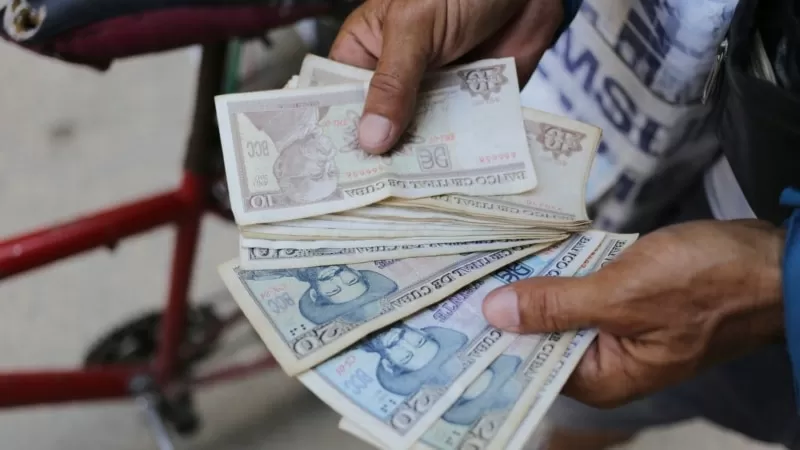HAVANA — Alejandro Fonseca, a 23-year-old Cuban, recently experienced the frustration of trying to withdraw money from an ATM in Havana. After waiting in line for several hours, he was disappointed to find out that the cash had run out just before his turn. He had to travel several kilometers to another branch to finally withdraw some money, wasting his entire morning in the process.
“It shouldn’t be so difficult to get the money you earn by working,” Fonseca told The Associated Press in a recent interview.
Unfortunately, Fonseca is not alone in his struggle. Many Cubans are facing a new hurdle in their already complicated monetary system – a shortage of cash. Long queues outside banks and ATMs have become a common sight in Havana and other cities as people try to get cash for their daily transactions, such as buying food and other essentials.
Experts say that there are several reasons behind this shortage, all of which are somehow related to Cuba’s deep economic crisis, one of the worst in decades. According to Omar Everleny Perez, a Cuban economist and university professor, the main culprits are the government’s growing fiscal deficit, the nonexistence of banknotes with a denomination greater than 1,000 pesos (about $3), stubbornly high inflation, and the non-return of cash to banks.
Perez explains that while there is money in circulation, most of it is not in the banks. Instead, it is being held by entrepreneurs and small business owners who are more likely to collect cash from commercial transactions but are reluctant to return it to the banks. This could be due to a lack of trust in the local banks or the need to convert the pesos into foreign currency.
In Cuba, most entrepreneurs and small business owners must import almost everything they sell or pay for supplies in foreign currency. As a result, many of them end up hoarding Cuban pesos to later exchange them for foreign currency on the informal market. However, this poses yet another challenge as there are several highly fluctuating exchange rates on the island.
For instance, the official exchange rate used by government industries and agencies is 24 pesos to the U.S. dollar, while for individuals, it is 120 pesos to the dollar. However, on the informal market, the dollar can fetch up to 350 Cuban pesos. This disparity in exchange rates makes it difficult for individuals and businesses to navigate the monetary system and further contributes to the shortage of cash.
According to Perez, in 2018, 50% of the cash in circulation was in the hands of the Cuban population, while the other half was in Cuban banks. However, in 2022, the latest year for which information is available, 70% of cash was in the wallets of individuals. This shift in the distribution of cash has only worsened the shortage.
The Cuban monetary authorities did not immediately respond to AP’s emailed request for comment on the issue. However, the shortage of cash is just one of the challenges that Cubans are facing in their complex monetary system. In 2019, the government introduced a virtual currency, MLC, and in 2023, it announced several measures to promote a “cashless society,” making the use of credit cards mandatory for certain transactions. However, many businesses still refuse to accept credit cards, making it difficult for people to make purchases.
Moreover, the stubbornly high inflation in Cuba means that more and more physical bills are needed to buy products. According to official figures, inflation stood at 77% in 2021, then dropped to 31% in 2023. However, for the average Cuban, these figures do not reflect the reality of their lives. Market inflation can reach up to three digits on the informal market, making it challenging for people to afford basic necessities. For example, a carton of eggs that sold for 300 Cuban pesos in 2019 now costs around 3,100 pesos.
All of these factors combined make it difficult for Cubans to navigate their monetary system and live a comfortable life. The monthly salary for Cuban state workers ranges between 5,000 and 7,000 Cuban pesos (between $14 and $20), which is not enough to cover the rising costs of living. As a result, many Cubans are struggling to make ends meet and are forced to wait in long lines for hours just to access their own hard-earned money.
“To live in an economy that, in addition to having


